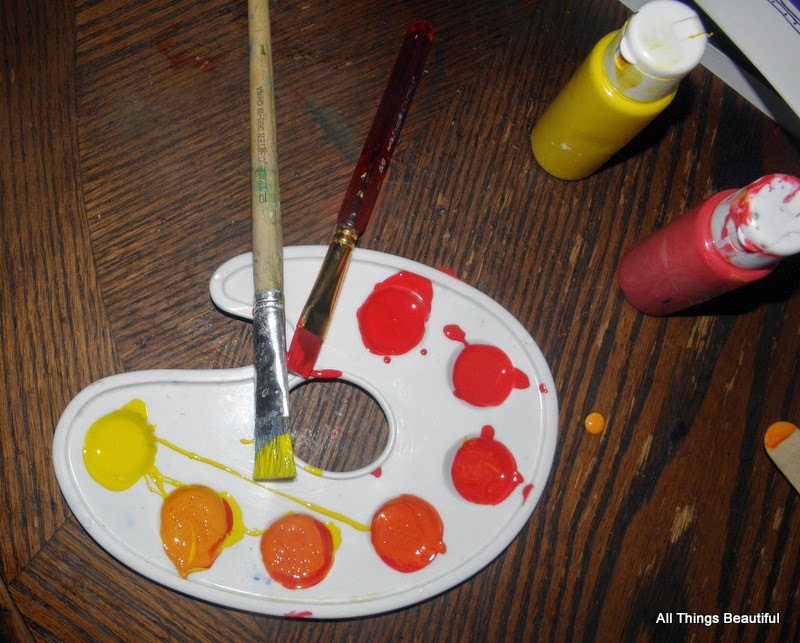1 2 3...I Can Paint!: Mix It Up! Primary and Secondary Colors
For Christmas, one of my students received an art set with acrylic paints and an art book. We will be doing weekly art projects that are simple enough for young or special needs students and yet interesting enough that perhaps some older students might want to do them, too. These would be great for a family art study. The first lesson is about primary and secondary colors and is simple enough to take just a few minutes and yet sets a great background for an ocean themed painting.
Blue, yellow and red are called primary colors. When you mix them, they make secondary colors green, orange and purple.
For this project, get out your primary colors and a surface to paint on. We are using acrylics and a small canvas, but you can use any paints such as tempera and any surface such as paper.
Paint your entire surface with blue paint.
Now, put some yellow paint near the top of your surface and mix it into some of the wet blue paint.
When the yellow mixes with the blue, it turns green.
Now, do the same at the bottom, using red paint this time.
As the red paint mixes with the blue, it becomes purple.
Now, let this background painting dry. We will turn this into an underwater world, with the light playing off the surface of the water, making it look green and the darkness at the bottom of the painting is a deep, dark purple.
Once your background is dry, we can begin to make our ocean scene.
We mixed some red and yellow paint together in various proportions to make several shades of orange. You will also need some black, white and some blue to mix with some yellow to make shades of green. You will also need these supplies: brushes, cotton swabs, craft sticks, a pencil or any other supplies you would like to use to make the details.
Dip your thumb into the paint and press it onto your painting to make fish. You can make them fat, round fish with just your print straight on the surface, or you can drag your finger a little while moving it up to make a longer fish.
Using a paintbrush or cotton swab, you can add the details of fins and tails.
With a craft stick you can add stripes to your fish, and a pencil can be used to add the eyes. Using the pencil, you can also add white dots for bubbles.
sources and resources:
- 123...I Can Paint, Irene Luxbacher












